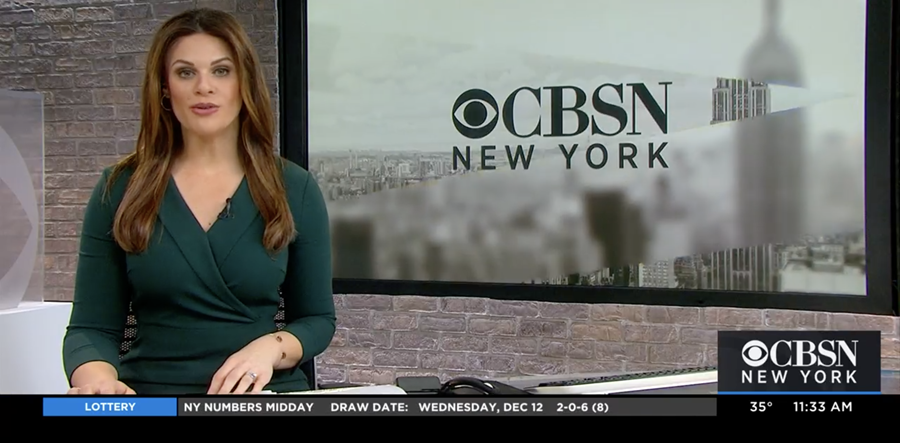Is CBSN The Future Of TV News?
With the traditional broadcast and cable news outlets branded as partisan, lacking local resources, and beset by cord-cutting, streaming service has an opening

The national news networks are in a curious place these days. Their partisan leanings, real or alleged, have come to define who they are. And of late, it often seems they are more interested in tattling on each other’s missteps than the actual events of the day.
All of which creates the opportunity for someone to come in and offer a different type of national news network.

Someone like CBSN with its combination of national stories and in-depth local coverage.
Local Still Matters
As the coronavirus pandemic exploded, viewers quickly realized the biggest limitation of the national news networks they initially turned to: They had little (if any) coverage of local stories and the pandemic was most definitely unfurling on a local level.
Viewership on local TV newscasts shot up, particularly among the younger demographic. And suddenly everybody remembered why they liked the local news shows with their excess of cheerful banter and dearth of partisan sniping.
In order to watch your local TV news show, of course, you need to have either a pay TV subscription or an antenna.
That is likely to become a problem over the next few months because there is going to be rapid uptick in cord cutting due to the massive levels of unemployment.
NEXT TV NEWSLETTER
The smarter way to stay on top of the streaming and OTT industry. Sign up below.
And by “rapid uptick” I mean we’ll go from 2%-3% of subscribers totally abandoning pay TV to something closer to 10%. Not the “massive wave” the Silicon Valley trades keep blathering about, but a significant increase nonetheless.
Similarly, while antenna usage and over-the-air reception has indeed gone up over the past several years, installing an HD antenna is often beyond the technical acumen of large segments of the population. And even if it’s not, it quickly becomes a hassle as you need to switch inputs every time you want to watch your favorite streaming services .
In other words, the market for cable and over the air local broadcast news is shrinking.
Which leaves OTT.
This is serendipitous because the main downside for users dumping pay TV for a strict diet of Flixes (aka SVOD services) and FASTS (free ad-supported streaming TV services) is that they have limited access to local news.
Enter CBSN, CBS News’s free OTT app, which has been launching local news feeds for all its owned and operated stations. The local broadcasts live as channels within the greater CBS News app and feature the kind of in-depth local reporting people want to see right now.
This is a smart move, as having the local broadcast on the same app with CBS’s national broadcast also gives viewers a free and trustworthy way to learn about national and international news stories. It also helps promote the CBS News brand, which not that long ago, was the gold standard for television news reporting and has a real opportunity to reclaim the mantle as a trusted nonpartisan source.
So is this the future of TV news?
While the pieces are all in place for CBSN to take off, there are still many roadblocks in its way.
The main one is that the service is currently limited to CBS’s owned and operated stations and thus leaves out a ton of non-O&O local affiliates, which, by law, make up 61% of the stations running CBS prime-time programming.
This is a real issue in that there are complex legal arrangements that might prevent the affiliates from striking a deal to put their news shows on the CBS News app.
In addition to complex retrans agreements with the MVPDs, many affiliates are part of larger station groups, and those groups may have their own apps (e.g., Sinclair’s STIRR) which would prevent them from taking part in the CBS app.
Finally, there’s the fact that prior to the pandemic, TV news skewed towards an older demographic, one that was not particularly inclined to use OTT apps.
And while not having any money because you’ve been unemployed for the past several months can be a great motivator of innovation, the CBSN app will need to find ways to appeal to younger users in order to keep growing.
This means using a different formula than the one that has driven the first wave of news services which seem to mostly turn off younger viewers.
An All OTT Future
One final factor in all this is that the MVPDs are not necessarily wedded to their current pay TV set-up, one they are making an increasingly lower percentage of their overall profits from.
It’s definitely within the range of possibility that they will start bundling broadband with some combination of Flixes and offering that to consumers along with a free streaming device to watch it all on. (Comcast, for instance, recently noted it had given away one million Flex streaming devices to its broadband only customers .)
In a universe like this, FASTS like CBSN will likely come pre-installed on the device. And if it’s a choice between a free service that offers local news and having to pay for a CNN or FoxNews, I suspect many consumers, younger ones in particular will opt for the former option.
The new app also gives a huge boost to local stations, making their news shows accessible to larger segments of the population, providing them with access to CBSN’s addressable advertising inventory, and allowing them to spread their creative wings by creating news and “news adjacent” shows for the local segments of the apps.
A renaissance of local journalism would be a positive development for the US too, as there are already too many “news deserts” where local news sources are limited.
For if there is one thing we’ve already learned from this pandemic, it’s that what happens locally is every bit as important as what happens nationally. CBSN and similar services could be the way to make that pay off.
Alan Wolk is the co-founder and lead analyst for media consultancy TV[R]EV

